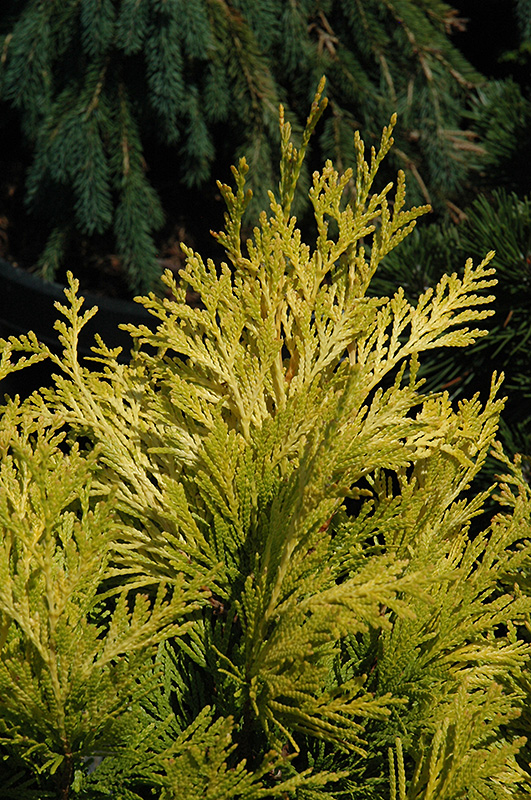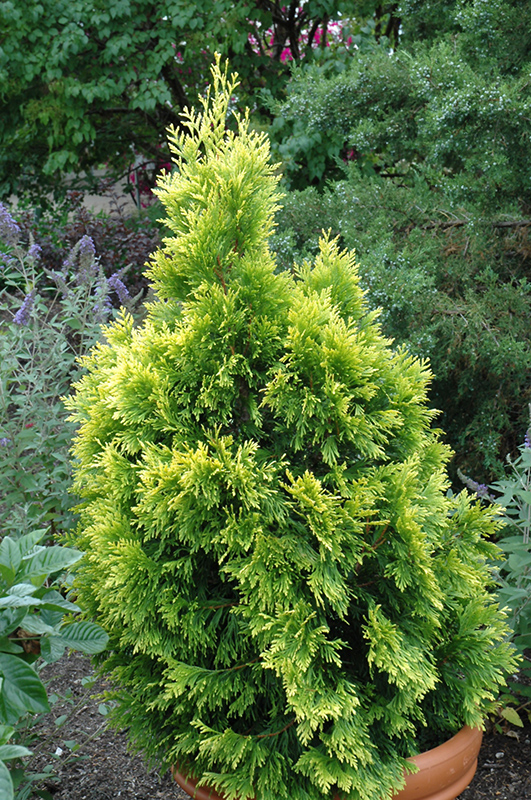
Forever Goldy Arborvitae foliage
Forever Goldy Arborvitae foliage
(Photo courtesy of NetPS Plant Finder)
Height: 20 feet
Spread: 5 feet
Sunlight:
![]()
![]()
Hardiness Zone: 4a
Other Names: 4ever Goldy Arborvitae, Western Red Cedar
Description:
A stunning accent tree which features rich golden sprays of foliage generously flecked with yellow and a narrow upright pyramidal habit; an excellent choice for color accent or articulation, performs best in moist, humid locations, but is adaptable
Ornamental Features
Forever Goldy Arborvitae is primarily valued in the landscape for its distinctively pyramidal habit of growth. It has attractive yellow-variegated gold foliage. The scale-like sprays of foliage are highly ornamental and turn coppery-bronze in the fall, which persists throughout the winter.
Landscape Attributes
Forever Goldy Arborvitae is a dense evergreen tree with a distinctive and refined pyramidal form. Its relatively fine texture sets it apart from other landscape plants with less refined foliage.
This is a relatively low maintenance tree. When pruning is necessary, it is recommended to only trim back the new growth of the current season, other than to remove any dieback. It has no significant negative characteristics.
Forever Goldy Arborvitae is recommended for the following landscape applications;
- Accent
- Vertical Accent
Planting & Growing
Forever Goldy Arborvitae will grow to be about 20 feet tall at maturity, with a spread of 5 feet. It has a low canopy, and is suitable for planting under power lines. It grows at a slow rate, and under ideal conditions can be expected to live for 70 years or more.
This tree does best in full sun to partial shade. It prefers to grow in average to moist conditions, and shouldn't be allowed to dry out. It is not particular as to soil type or pH. It is somewhat tolerant of urban pollution, and will benefit from being planted in a relatively sheltered location. Consider applying a thick mulch around the root zone in winter to protect it in exposed locations or colder microclimates. This is a selection of a native North American species.
A NetPS Plant Finder tool
